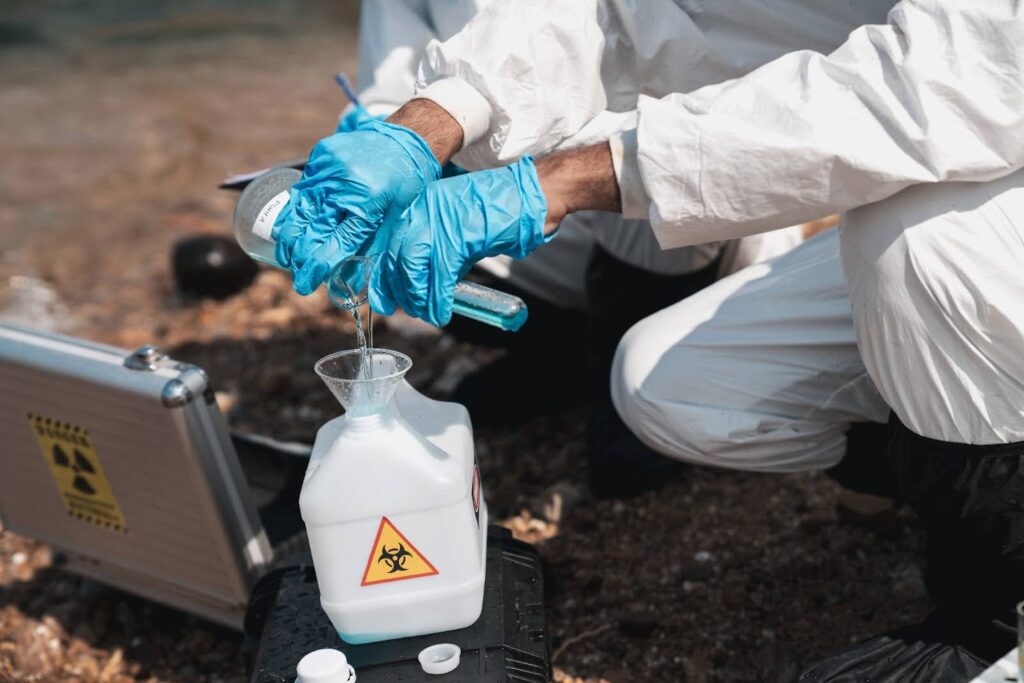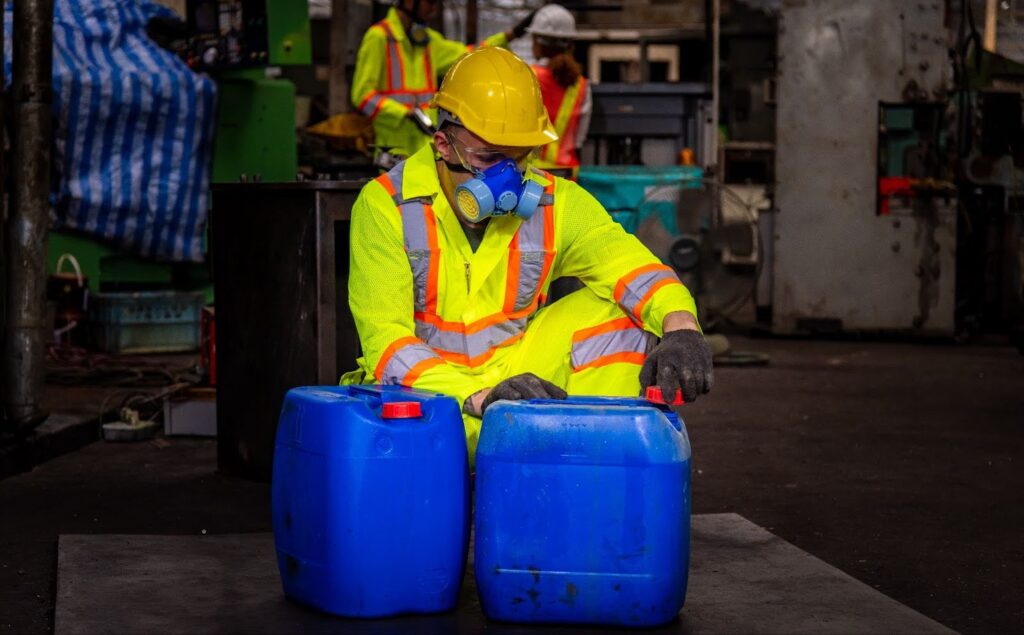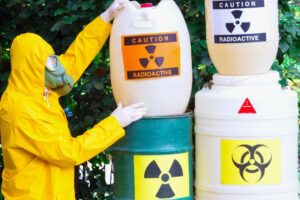Chemical Waste Disposal Guidelines: Rules You Must Follow!
April 3, 2024

Chemical waste that is no longer used must be disposed of under waste disposal protocols. This is due to its chemical composition and infectious characteristics. They pose serious risks to both humans and the environment so proper disposal is crucial.
Here are chemical waste disposal guidelines you must follow based on the National Environment Agency (NEA):
Identify and Categorise the Waste
Before disposal, it is essential to identify and categorise the chemical waste. This includes determining its chemical composition, potential hazards and any special handling requirements.
Remember to segregate the waste based on its characteristics. It can usually be one of four categories; ignitability, corrosivity, reactivity or toxicity.
Requirements and Regulations
Once the waste has been classified, there are several requirements and regulations for waste disposal:
- Permitting and Licensing
Ensure compliance with all regulatory bodies that govern the disposal of chemical waste. Obtain necessary permits or licences from the NEA and other authorities before initiating disposal activities. - Proper Labelling and Packaging
Label containers with clear and accurate information. Indicate its hazardous nature and securely package to prevent spillage during transportation. - Disposal Site Selection
Select disposal sites or facilities that are authorised and permitted to accept the specific types of chemical waste (stated below). Verify that the chosen site meets environmental and safety standards set by regulatory agencies. - Documentation and Record-Keeping
Maintain accurate records of waste generation, handling, transportation and disposal activities. Document details such as waste composition, quantities and disposal methods. This information is crucial for regulatory compliance and auditing purposes.
Proper Waste Disposal Methods
According to the NEA, there are three main methods when it comes to chemical waste disposal procedures:
- Incineration
Incineration is a common method for disposing of certain types of chemical waste. It involves burning the waste at high temperatures in a controlled environment, reducing it to ash and gases.
This process helps destroy hazardous chemicals and pathogens, minimising environmental contamination. However, not all chemical waste is suitable for incineration so careful consideration must be given.
- Chemical Treatment: Chemical treatment involves using various chemical processes to neutralise hazardous substances in waste. This includes oxidation, reduction, precipitation, or hydrolysis.
Chemical treatment can be effective for certain types of waste but it requires specialised equipment and expertise.
- Landfill Disposal: Landfill disposal is often considered the least desirable option for chemical waste disposal. It poses long-term risks to soil and groundwater contamination, causing more environmental damage than intended.
However, landfill disposal may be the only viable option for certain types of chemical waste. This includes highly persistent, non-biodegradable or extremely hazardous waste.
It is crucial to ensure that the landfill facility is properly designed and equipped to handle hazardous waste.
Chemical Waste Management Strategies
Taking a proactive approach is the best way to mitigate the risks of chemical waste. While the disposal of waste is expected to increase, the need for sustainable management practices is ever more important.
Here are strategies that the NEA have prioritised for effective waste management:
- Reduce and Reuse: Reducing and reusing chemical waste focuses on minimising the generation of waste at the source. It also focuses on finding alternative uses for materials to extend their lifespan.
This approach involves various tactics aimed at reducing the overall volume of waste produced while maximising the utility of existing resources.
Ultimately, companies can not only minimise the environmental impact of chemical waste but also enhance resource efficiency.
- Recycle: Recycling chemical waste involves converting waste materials into reusable raw materials. It requires various processes such as sorting, cleaning, and reprocessing.
Recycling plays a crucial role in diverting waste from landfills. It can also conserve natural resources and reduce the environmental impact of waste disposal.
- Waste Treatment: Waste treatment involves processing chemicals to reduce its toxicity before disposal. Treatment methods vary depending on the nature of the waste and may include physical, chemical, biological or thermal processes.
This method requires innovative approaches to effectively manage the diverse array of waste. Advancement in technology and process optimisation can greatly enhance the waste treatment process.
- Landfill and Ash Management: Proper landfill and ash management practices can mitigate environmental risks and minimise the impact of waste disposal. Turning ash residue into useful resources minimises the volume of waste.
Ultimately, this will reduce the amount of materials destined for landfills. This also aligns with the method of recycling as it encourages the reutilisation of resources.
How to Dispose Different Chemical Waste

Chemical waste can vary widely in composition and properties. It is important to understand the different types of waste and adhere to their waste disposal regulations. Here are common types of waste and how you can dispose them properly:
- Solvent Waste: Solvent waste are common byproducts of industrial processes. They are usually contaminated with organic solvents such acetone and methanol. These solvents can be recycled or reclaimed through distillation or solvent recovery processes.
- Acidic and Basic Waste: Acidic and basic waste consist of solutions containing strong acids like sulfuric and hydrochloric acid. Neutralisation is commonly used to treat these types of waste. It involves adding chemical treatments that adjust the PH to a safe level. The waste may be suitable for discharge once it has been neutralised.
- Heavy Metal Waste: Heavy metal waste contains toxic metals such as lead, mercury, cadmium, chromium and arsenic. Treatment methods include precipitation and chemical stabilisation to immobilise the metals and prevent leaching. Landfill disposal of treated heavy metal waste may be subject to strict regulatory requirements to prevent environmental contamination.
Conclusion
Ensuring a clean and safe environment is a collective responsibility. Whether you are a citizen or a licensed waste collector, we should all play our part in disposing waste the right way.
These chemical waste disposal guidelines are the perfect way to safeguard the environment and public health. Remember to follow them diligently while staying informed about the latest rules and regulations. Contact us to find out more!
 GreenTec Energy Pte Ltd (GTE) is a waste management company located in Tuas, Singapore.
GreenTec Energy Pte Ltd (GTE) is a waste management company located in Tuas, Singapore.
Our service includes Industrial waste, Oily waste, Marine waste.
To provide a hassle free solution to our customer is always the key approach and to ensure a win-win situation towards. As a NEA approved environmental company in Singapore, we take all our services seriously and to ensure maximum safety with compliances applied. Every step of our disposal processes are also designed to meet NEA & SCDF requirements, with latest treatment facilities and laboratories to test and treat all incoming waste before disposal.
GTE operates a total land area of about 100,000sqft at 14 Tuas South Street 12 Singapore 636953. With our comprehensive logistics and transportation fleet, we provide prompt and efficient services in transportation of waste to our premises.



